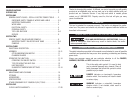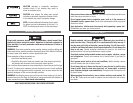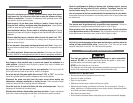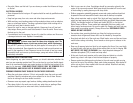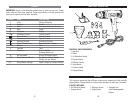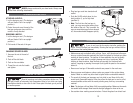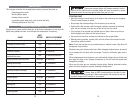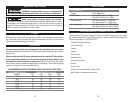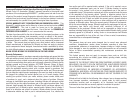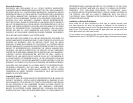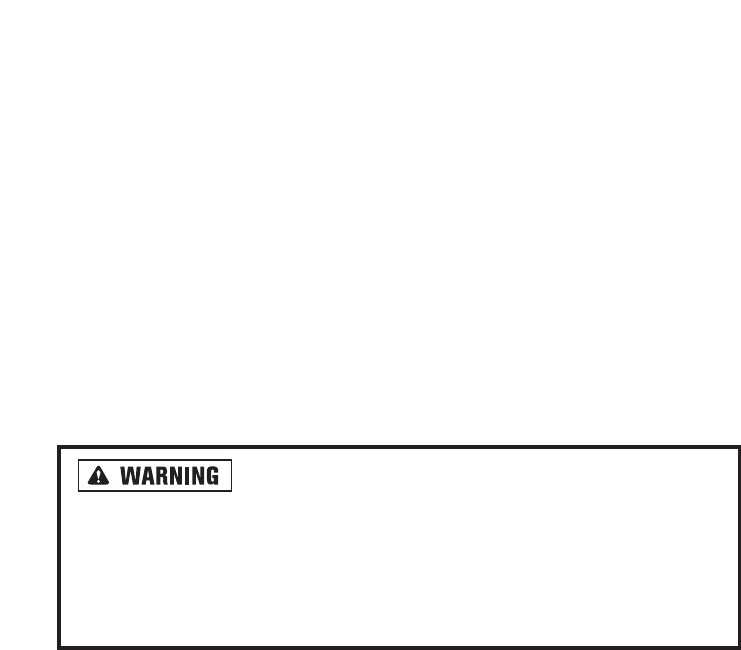
• Work in one room at a time. Furnishings should be removed or placed in the
center of the room and covered. Work areas should be sealed off from the rest
of the dwelling by sealing doorways with drop cloths.
• Children, pregnant or potentially pregnant women and nursing mothers should not
be present in the work area until the work is done and all clean up is complete.
• Wear a dust respirator mask or a dual filter (dust and fume) respirator mask
which has been approved by the Occupational Safety and Health Administration
(OSHA), the National Institute of Safety and Health (NIOSH), or the United
States Bureau of Mines. These masks and replaceable filters are readily avail-
able at major hardware stores. Be sure the mask fits. Beards and facial hair may
keep masks from sealing properly. Change filters often. DISPOSABLE PAPER
MASKS ARE NOT ADEQUATE.
• Use caution when operating the heat gun. Keep the heat gun moving as
excessive heat will generate fumes which can be inhaled by the operator.
• Keep food and drink out of the work area. Wash hands, arms and face and rinse
mouth before eating or drinking. Do not smoke or chew gum or tobacco in the
work area.
• Clean up all removed paint and dust by wet mopping the floors. Use a wet cloth
to clean all walls, sills and any other surface where paint or dust is clinging. DO
NOT SWEEP, DRY DUST OR VACUUM. Use a high phosphate detergent or
trisodium phosphate (TSP) to wash and mop areas.
• At the end of each work session put the paint chips and debris in a double
plastic bag, close it with tape or twist ties and dispose of properly.
• Remove protective clothing and work shoes in the work area to avoid carrying
dust into the rest of the dwelling. Wash work clothes separately. Wipe shoes off
with a wet rag that is then washed with the work clothes. Wash hair and body
thoroughly with soap and water.
87
• Stay alert. Never use this tool if you are drowsy or under the influence of drugs
or alcohol.
ELECTRICAL HAZARDS
• Never disassemble the heat gun. All repairs should be made by qualified service
personnel.
• Keep heat gun away from rain, snow and other damp environments.
• While working, avoid making contact with grounded surfaces such as radiators,
pipes, or aluminum ladders. Touching a grounded object while working with a
power tool could lead to electric shock.
• Inspect the cord for wear or damage regularly. Keep away from oil, heat and
sharp edges. Never yank the cord to disconnect it from the outlet. Do not carry
the heat gun by the cord.
• If an extension cord is necessary, be sure it is rated for outdoor use. Never use
a damaged extension cord. Replace it immediately.
Extreme care should be taken when stripping paint. The
peelings, residue and vapors of paint may contain lead, which is poisonous.
Any pre-1977 paint may contain lead and paint applied to homes prior to 1950
is likely to contain lead. Once deposited on surfaces, hand to mouth contact can
result in the ingestion of lead. Exposure to even low levels of lead can cause
irreversible brain and nervous system damage; young and unborn children are
particularly vulnerable.
IMPORTANT SAFETY INSTRUCTIONS
Before beginning any paint removal process you should determine whether the
paint you are removing contains lead. This can be done by your local health depart-
ment or by a professional who uses a paint analyzer to check the lead content of the
paint to be removed. LEAD-BASED PAINT SHOULD ONLY BE REMOVED BY A
PROFESSIONAL AND SHOULD NOT BE REMOVED USING A HEAT GUN.
PERSONS REMOVING PAINT SHOULD FOLLOW THESE GUIDELINES:
• Move the work piece outdoors. If this is not possible, keep the work area well-
ventilated. Open the windows and put an exhaust fan in one of them. Be sure
the fan is moving the air from inside to outside.
• Remove or cover any carpets, rugs, furniture, clothing, cooking utensils and air ducts.
• Place drop cloths in the work area to catch any paint chips or peelings. Wear
protective clothing such as extra work shirts, overalls and hats.




